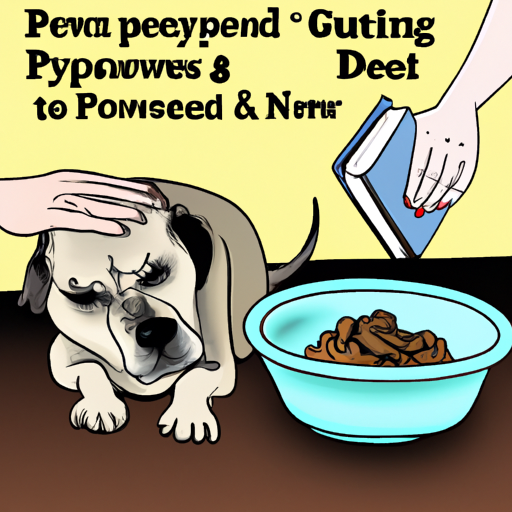Understanding Food Aggression in Dogs
Food aggression is a form of resource guarding where a dog becomes overly defensive with food. It’s a primitive instinct, but in a domestic setting, it can be troublesome and even dangerous.
There are three levels of food aggression:
- Mild: growling and showing teeth
- Moderate: snapping and lunging when approached
- Severe: biting
Remember, you’re not alone in this struggle. Many dog owners face this issue and, with proper handling, it can be managed effectively.
Recognizing the Signs of Food Aggression
Before you can address the problem, it’s important to identify it. Here are some common signs:
- Sudden increase in eating speed
- Stiffening and staring when someone approaches their food
- Growling, snapping, or biting
These signs can escalate quickly, and it can easily turn into a serious issue. Therefore, it’s crucial to address the problem as soon as you notice the first signs.
Steps to Manage Food Aggression
You may feel anxious or frustrated, but remember, your canine friend isn’t doing this out of spite. Here are some steps you can take to manage food aggression:
-
Consult a Professional: This is especially important for severe cases. Dog trainers or animal behaviorists have the necessary experience to guide you and your dog through this process.
-
Work on Basic Commands: Basic obedience training can be very helpful. Commands like “sit”, “stay”, and “leave it” are particularly useful.
-
Desensitize Your Dog: Gradually get your dog used to having people around while eating. Start by standing a bit far, then gradually reduce the distance as your dog gets more comfortable.
-
Controlled Feeding: Don’t leave food out all day. Have specific feeding times and control the environment.
-
Positive Reinforcement: Reward your dog for good behavior. This can be a treat, a pat, or words of praise.
Preventing Food Aggression
Prevention is always better than cure. Here are some strategies to prevent food aggression:
- Feed your dog in a quiet and safe space.
- Avoid touching or disturbing your dog while eating.
- Train your dog to understand that you’re not a threat to their food.
- Regularly practice obedience commands.
Remember, consistency is key in maintaining these practices.
Frequently Asked Questions
Q: Can food aggression be cured completely?
A: It varies from dog to dog. With consistent training and patience, it can certainly be managed effectively.
Q: Is food aggression common in certain breeds?
A: Food aggression is not breed-specific. It can happen in any breed.
Q: Is food aggression a sign of dominance?
A: Not necessarily. It’s often simply a survival instinct.
Q: Should I punish my dog for showing food aggression?
A: Punishment can escalate the aggression. It’s best to use positive reinforcement methods instead.
Remember, dealing with food aggression can be a long journey, but with patience and understanding, it can certainly be managed.



